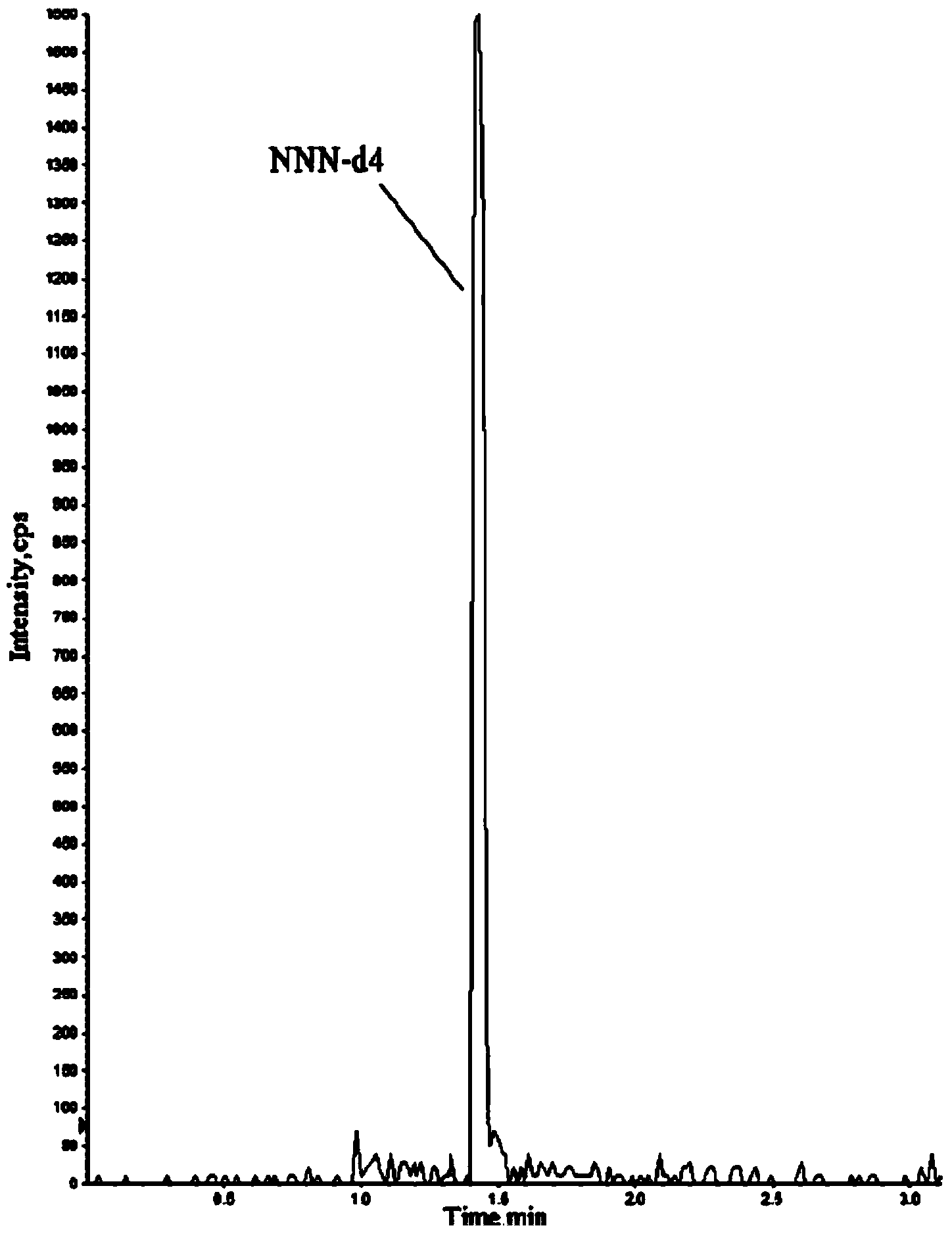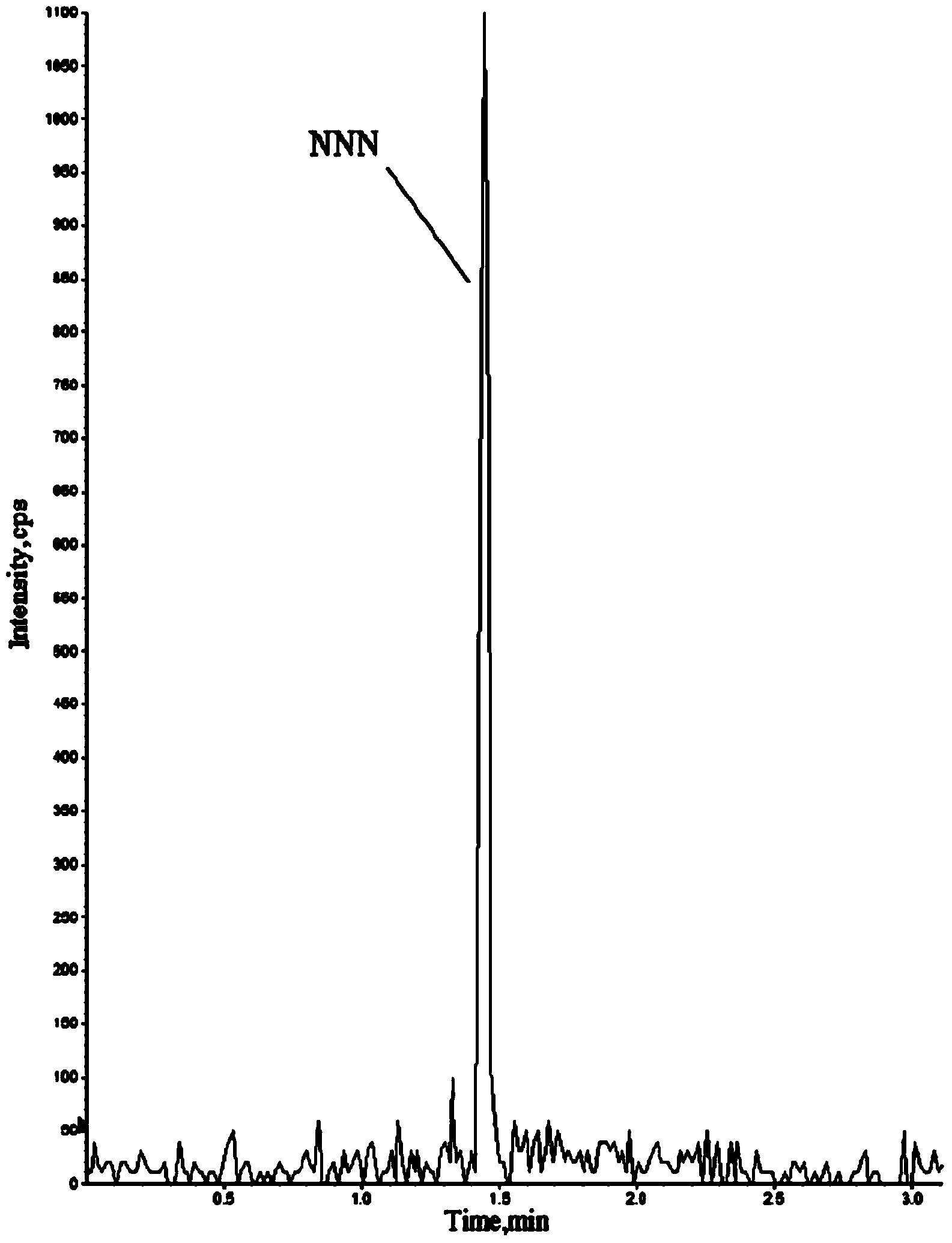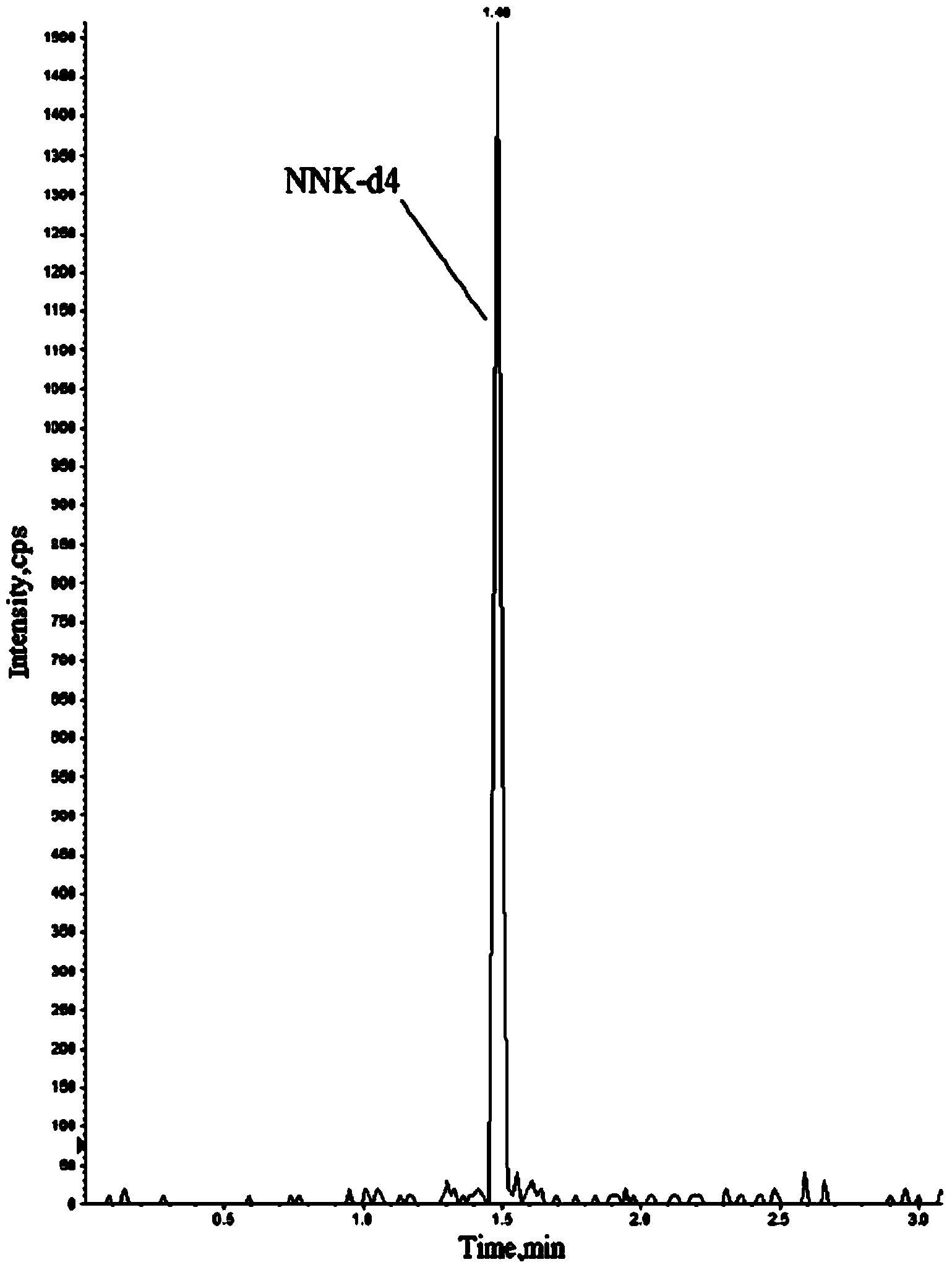Method for measuring TSNAs (tobacco-specific nitrosamines) in electronic cigarette smoke
A measurement method and technology of electronic cigarettes, applied in the direction of measuring devices, instruments, scientific instruments, etc., can solve the problems of few reports on measurement methods, and achieve the effects of simple pre-treatment, improved analysis throughput, and accurate analysis results
- Summary
- Abstract
- Description
- Claims
- Application Information
AI Technical Summary
Problems solved by technology
Method used
Image
Examples
Embodiment 1
[0032] A liquid chromatography tandem mass spectrometry method for the determination of tobacco peculiar nitrosamines in electronic cigarette smoke. The test process is that the electronic cigarette smoke sample is diluted and directly introduced into a high performance liquid chromatography-triple quadrupole tandem mass spectrometry system for analysis.
[0033] This method is the determination of four specific nitrosamines: NNK, NNN, NAT and NAB, and includes the following steps:
[0034] a. Cigarette smoking: e-cigarette samples are smoked in Canada deep smoking, Massachusetts or ISO smoking mode;
[0035] b. Smoke capture: Use full smoke traps in series with absorption bottles or Cambridge filters, or Cambridge filters in series with absorption bottles, or use Cambridge filters or absorption bottles alone for e-cigarette smoke collection.
[0036] c. Configure standard series solutions: prepare series standard solutions with NNK, NNN, NAT and NAB standard substances; ①Weigh 10.0 mg...
PUM
 Login to View More
Login to View More Abstract
Description
Claims
Application Information
 Login to View More
Login to View More - Generate Ideas
- Intellectual Property
- Life Sciences
- Materials
- Tech Scout
- Unparalleled Data Quality
- Higher Quality Content
- 60% Fewer Hallucinations
Browse by: Latest US Patents, China's latest patents, Technical Efficacy Thesaurus, Application Domain, Technology Topic, Popular Technical Reports.
© 2025 PatSnap. All rights reserved.Legal|Privacy policy|Modern Slavery Act Transparency Statement|Sitemap|About US| Contact US: help@patsnap.com



